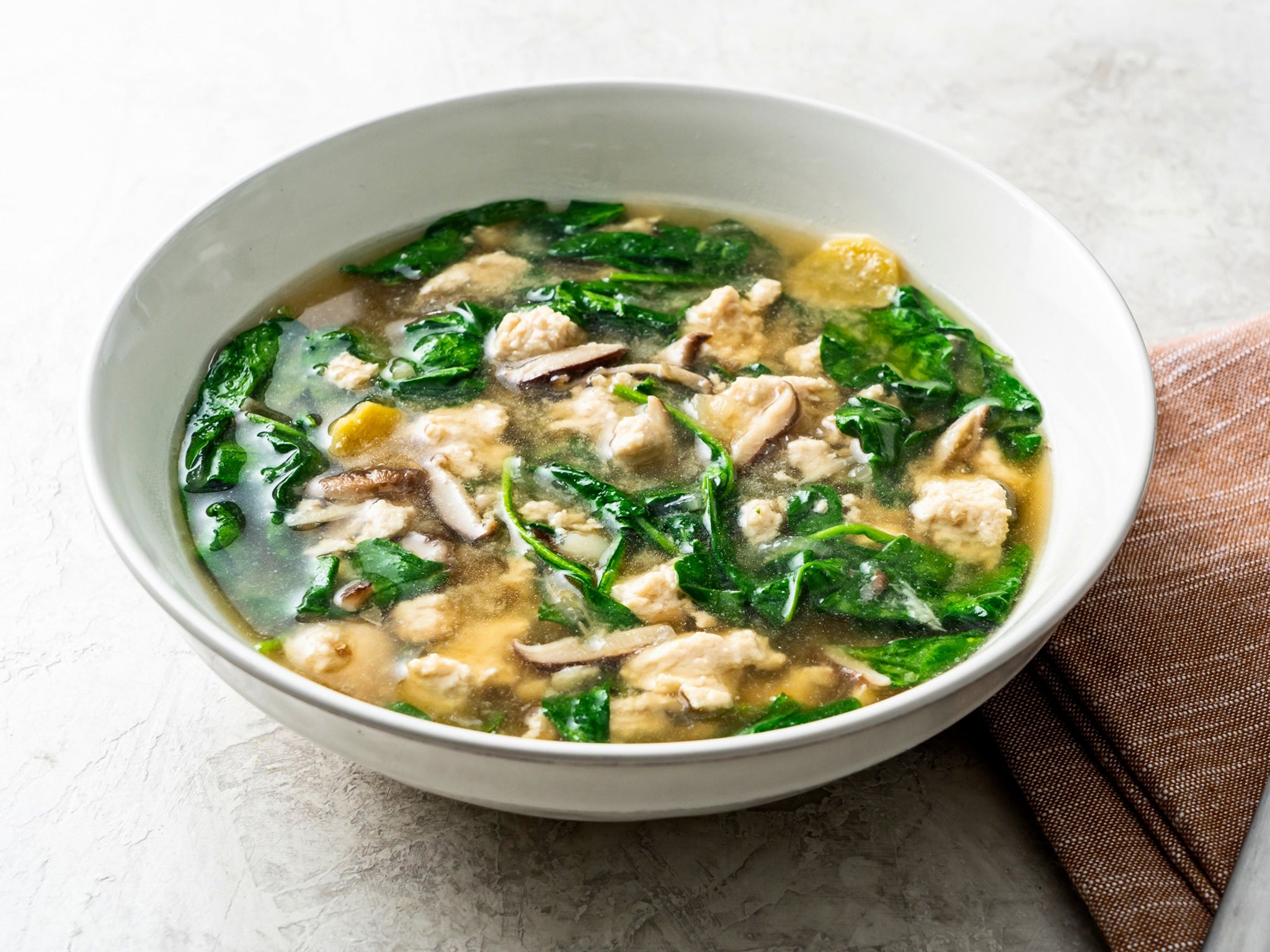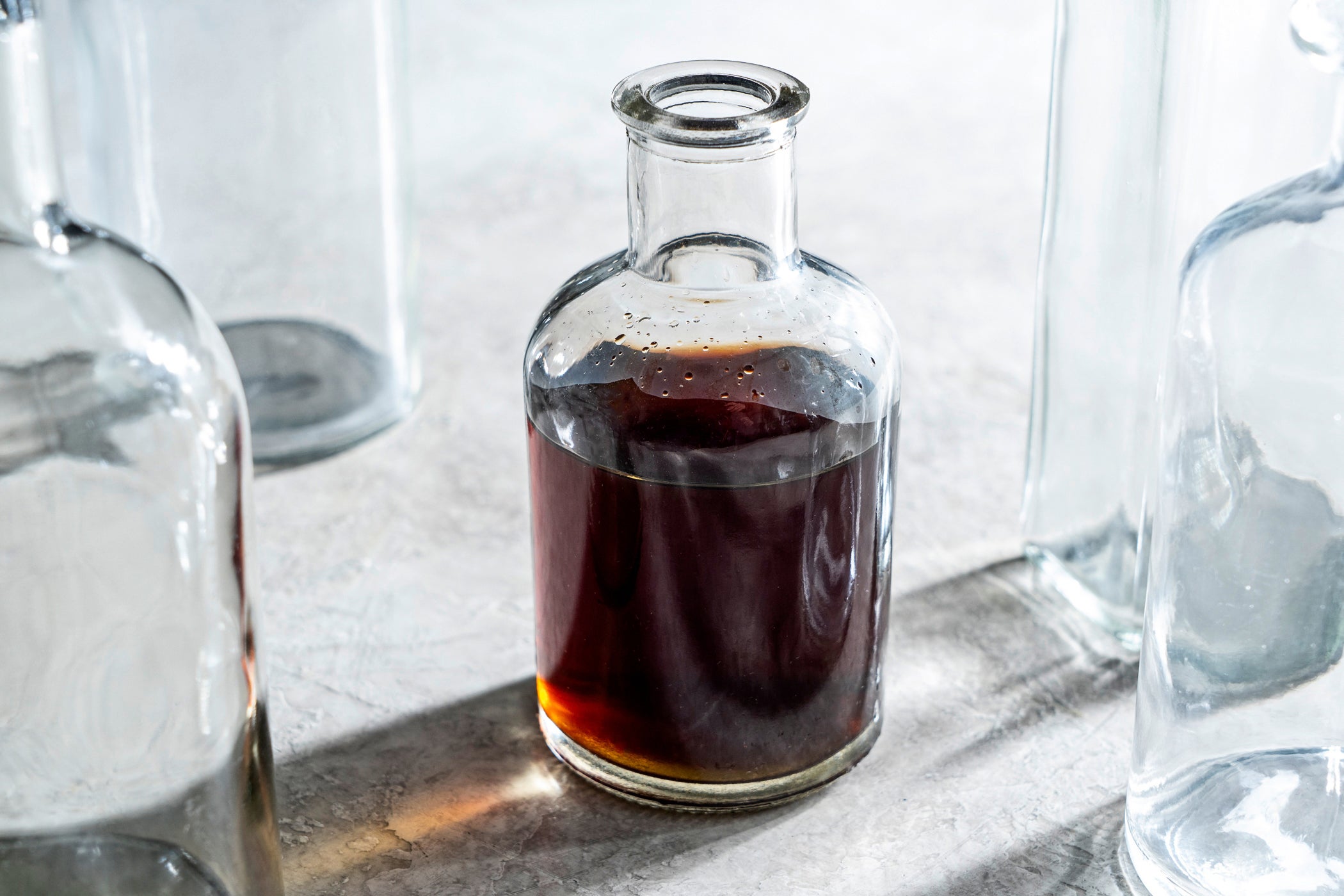Paleo-friendly chicken soup that even your kids will love
This chicken soup owes its velvety texture to a Cantonese cooking technique. By Ann Maloney

Your support helps us to tell the story
From reproductive rights to climate change to Big Tech, The Independent is on the ground when the story is developing. Whether it's investigating the financials of Elon Musk's pro-Trump PAC or producing our latest documentary, 'The A Word', which shines a light on the American women fighting for reproductive rights, we know how important it is to parse out the facts from the messaging.
At such a critical moment in US history, we need reporters on the ground. Your donation allows us to keep sending journalists to speak to both sides of the story.
The Independent is trusted by Americans across the entire political spectrum. And unlike many other quality news outlets, we choose not to lock Americans out of our reporting and analysis with paywalls. We believe quality journalism should be available to everyone, paid for by those who can afford it.
Your support makes all the difference.Michelle Tam has a little secret. She’s not necessarily writing her cookbooks and blog just for paleo-conscious home cooks.
“The design for all of our cookbooks is to secretly appeal to kids,” said Tam, who just published her third cookbook, Nom Nom Paleo. Let’s Go! “That is why we do the step-by-step photos, the cartoons and the dad jokes. We want kids to be excited to cook their own meals and to be interested in cooking their own foods.”
For example, her recipe for chicken velvet and spinach soup features 14 accompanying photos, shot by Tam’s husband, Henry Fong, that take you by the hand and walk you through the process of making this soothing, gingery dish. In the corner of the page is a cartoon of a little girl holding a soup bowl to her mouth – Slurp! – drinking down every last drop.
“It’s something my husband and I throw our blood, sweat and tears into, because we really do it all ourselves,” said the mother of two teenagers.
“People think I love to cook, but I don’t. I love to eat, but I’m also a picky eater,” said Tam, whose popular Nom Nom blog, which started in 2010, already had spawned two best-selling cookbooks that feature paleo-friendly recipes. Tam takes issue with those who describe the cooking style as eating like our ancestors did during the paleolithic period. She interprets it to mean “enjoying wholesome, nourishing foods and avoiding those that trigger inflammation, cause digestive problems and derail our natural metabolic processes”.
Tam credits her success partially to timing. Her first cookbook came out in 2013 when paleo eating was “super hot”. Back then, she and her family went totally paleo, scrubbing their home of grains, dairy, beans and sugar.
Today, Tam eats a 100 per cent gluten-free diet and frequently eats paleo, but she eats non-paleo foods as well, she said, noting that she toyed with the idea of calling this latest cookbook “Paleo-ish” to reflect her more relaxed approach. (An example: She wrote “I love me some beans,” in the introduction to her cookbook.)
Her latest book continues to feature paleo-friendly recipes, but also lists how each recipe suits other eating plans and the various food allergies and sensitivities people might have. For example, this chicken soup is suitable for Whole30 as well as being keto-friendly, nut-free and nightshade-free (even if you are not following any sort of restrictive diet, the cookbook is appealing for its flexible, clearly written and varied recipes).
With the vast array of food sensitivities in mind, she developed a vegan no-fish sauce, her interpretation of an Asian fish sauce, which is made by simmering shiitake mushrooms, dulse seaweed and coconut aminos. But, she said, if you can eat fish sauce, use it in this soup for its big flavour boost. Also, because she is following the paleo path, she uses arrowroot in her chicken mince, but notes cornstarch works just as well.
The Let’s Go cookbook, her first in four years, grew out of being stuck at home during the pandemic, said Tam, who was a hospital pharmacist before devoting herself to full-time recipe developing and writing in 2014.
“This cookbook is really just a love letter to the food I grew up with and the foods I missed because we were stuck in the pandemic,” she said, noting that there are many Cantonese-style recipes, but also ones that reflect other immigrant cultures in the San Francisco Bay area.
Tam, who grew up in the area and now lives in Palo Alto, was longing for this chicken soup, so she made it for her family.
“Whenever we would go to a Cantonese banquet dinner with my family, it always starts with this beautiful soup in the beginning,” she said. “The meat is finely minced and mixed with egg whites, ice water and some kind of starch, so it becomes fluffy and velvety. The texture and that soup really takes me back to my childhood.”
Her mother would use a giant clever to finely chop the chicken, but Tam said that for this recipe, “you gotta break out the food processor.”
She borrows from the velveting technique used in Cantonese cooking: meats are coated and marinated in cornstarch, egg whites, rice wine, salt and water to tenderise. Here, when the finely minced chicken mixture is spooned into the hot broth and broken into pieces, it becomes tender, almost like fluffy little meat clouds.
“You can use shop-bought chicken mince and it will still be delicious, but it won’t give you the same kind of velvet effect,” she said.
“Unlike my mom, who cooks 10 courses plus this soup, this is my dinner,” she said.
When I spoke with Tam in late January, she was on a book tour and was excited to be returning home in time for the Lunar New Year, especially so she could be “spoiled by my mom, who lives near us”.
Here’s to hoping that, in 2022, we’ll all be able to enjoy traditional celebrations together with family and friends. Happy new year!
No-fish sauce

Active time: 30 minutes | Total time: 1 hour
Serves: 2
Where to buy: Dulse seaweed can be found at Asian supermarkets and online.
Storage notes: Refrigerate for up to 1 month.
Ingredients:
700ml water
30g packed dried dulse seaweed
2 tbsp coconut aminos (see note)
2 large dried shiitake mushrooms (about 15g), broken into small pieces
⅛ tsp fine salt
Method:
In a medium saucepan over high heat, combine the water, dulse, coconut aminos, shiitakes and salt and bring to a boil. Reduce the heat to maintain a simmer and cook until reduced by half, about 20 minutes.
Strain through a fine mesh strainer (discard the solids) and let cool to the touch. Transfer to a resealable bottle or jar and refrigerate.
Note: If you can’t find coconut aminos, you may use soy sauce.
Chicken velvet and spinach soup

Time: 45 minutes
Serves: 4 servings
Where to buy: Fish sauce and coconut aminos can be found in well-stocked supermarkets, Asian markets or online.
Ingredients:
450g boneless, skinless chicken breast, cut into 1-inch cubes
1 large egg white
2 tsp arrowroot powder (see headnote)
2 tsp ice water
½ tsp fine salt
1 tbsp avocado oil or ghee
1 large shallot, thinly sliced
115g shiitake mushrooms, stemmed and thinly sliced
1 (5cm) piece fresh ginger, peeled and thinly sliced into coins
3 cloves garlic, peeled and smashed or grated
1.4L no-salt bone or chicken broth
2 tsp coconut aminos, or to taste (see headnote)
1 tsp fish sauce or paleo-friendly no-fish sauce (see related recipe), to taste
200g baby spinach
½ tsp sesame oil, or to taste
Method:
In the bowl of a food processor, add the chicken and pulse until thoroughly chopped. Add the egg white, arrowroot powder, ice water and salt and process until a “velvety” paste forms. Transfer the chicken to a large bowl.
In a large saucepan over medium-high heat, heat the oil until shimmering. Add the shallot and mushrooms and cook, stirring frequently, until the shallots are slightly softened, 2 to 3 minutes.
Add the ginger and garlic and cook, stirring, until fragrant, about 1 more minute.
Pour in the broth, increase the heat to high and bring to a boil. Immediately return the heat to medium, and add the coconut aminos and fish sauce. Taste, and add more, as desired. Add the chicken to the broth and break it up with a spatula or spoon.
Once the chicken is no longer pink, stir in the spinach and cook just until the spinach is wilted, about 2 minutes. Turn off the heat and stir in the toasted sesame oil. Taste, and add more oil, if desired. Portion into bowls and serve.
Nutrition information per serving, based on 4 | calories: 268; total fat: 10g; saturated fat: 2g; cholesterol: 83mg; sodium: 780mg; carbohydrates: 8g; dietary fibre: 2g; sugar: 2g; protein: 36g.
This analysis is an estimate based on available ingredients and this preparation. It should not substitute for a dietitian’s or nutritionist’s advice.
Recipes adapted from ‘Nom Nom Paleo. Let’s Go!’ by Michelle Tam and Henry Fong (Andrew McMeal Publishing, 2022).
© The Washington Post
Join our commenting forum
Join thought-provoking conversations, follow other Independent readers and see their replies
Comments